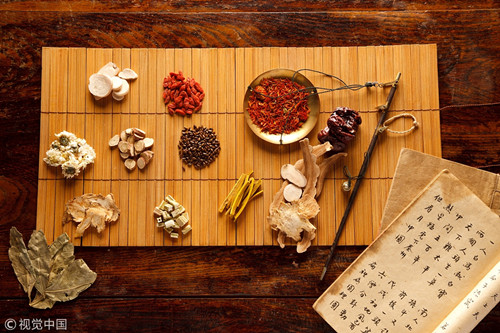Modernization of traditional Chinese medicine

A file photo of traditional Chinese medicine. [Photo/VCG]
From a needle and a handful of herbs to the discovery of artemisinin, TuYouyou’s work in traditional Chinese medicine (TCM) eventually won her the Nobel Prize. And from a lack of successors to going abroad, TCM has been attracting attention throughout the world in the past 40 years.
TCM is best developed by prioritizing inheritance of its methods. Teaching by percept and example, is the model given by Li Jiren, the first session national TCM master, when he was asked the best way to inherit TCM.
In his over 60-years career from a countryside doctor to a nationally renowned TCM specialist, Li has not only practiced TCM all his life to help people, but has also inspired all his five children to devote themselves to the inheritance of TCM culture.
In 2009, Li was selected as one of the first 30 national TCM masters. He is also the inheritor of “Zhang Yitie”, a national intangible cultural heritage. Adhering to the family rules and motto of filial piety, loyalty, propriety, righteousness, integrity, self-improvement, refinement, kindness and harmony, the Li family manifests the elegant demeanor of TCM family inheritors from generation to generation.
His inheritance originates from Xin’an (a school of TCM). It is based on studies of ancient Chinese civilization, focuses on clinical practice and develops toward science, Li said when looking back on the past 40 years.
The development of TCM needs innovation. Ever since the Shen Nong Ben Cao Jing (Shennong’s Classic of Materia Medicia), TCM has been absorbing advanced technology and methods, and the knowledge of medicine has been continuously deepened, according to Huang Luqi, a member of the Chinese Academy of Engineering and executive vice-president of China Academy of Chinese Medical Science. Huang adds that the modernization of TCM has been an uninterrupted process for thousands of years. The process is the answer to how to absorb modern science and technology in TCM’s development and how to make them work together. It is the essence of the modernization of TCM.
Facing the common problems in the production of Chinese medicinal materials, such as easy loss of active ingredients, long production cycle and environmental pollution, Huang has been committing to the standardization of TCM and has made great efforts to see it modernized.
Looking back on the past 40 years, Huang said that China’s 40 years of reform and opening-up has provided a great opportunity for the inheritance and development of TCM.


